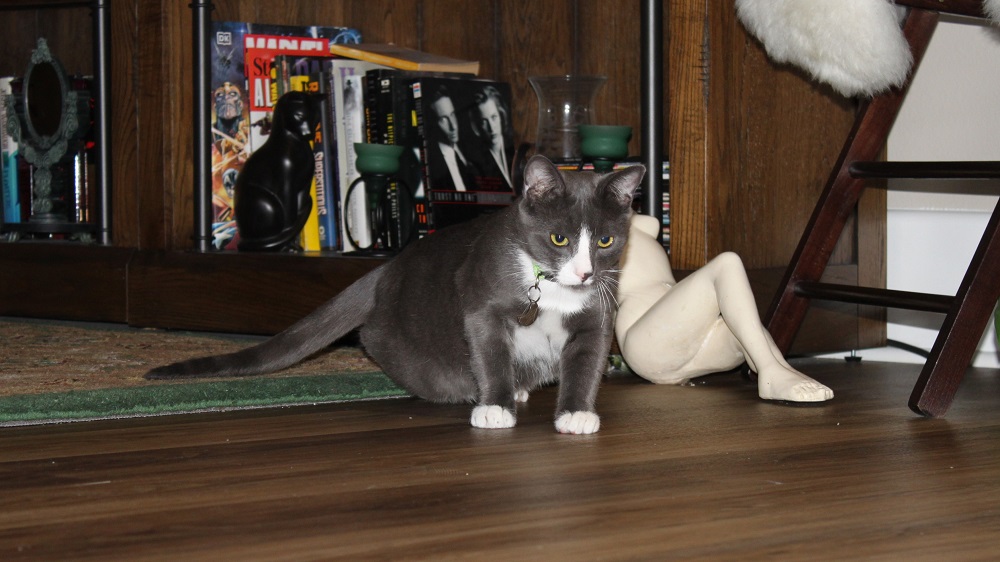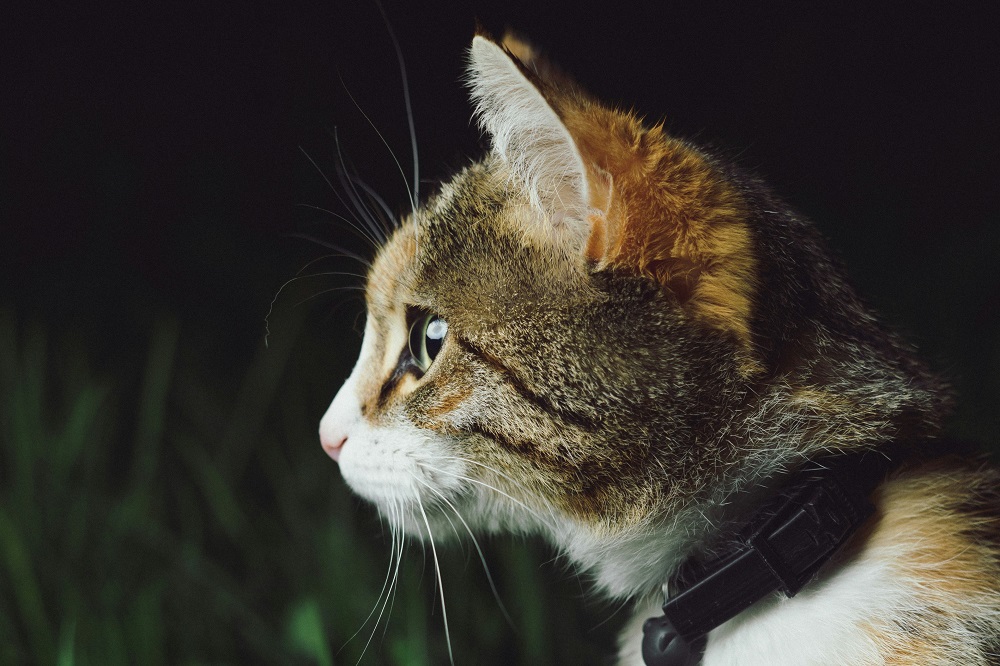Your cat stares into the pitch-black hallway, then trots off confidently like they have night vision goggles built in. Meanwhile, you’re fumbling for a light switch and stepping on a rogue toy mouse. It’s easy to believe that cats can see in total darkness, but is that actually true?
Let’s take a closer look at how cat vision works, why they seem so comfortable in the dark, and what they can and cannot really see when the lights go out.
Cats See in the Dark, But Not in Complete Darkness
Cats have excellent night vision, but even they have their limits. The common myth that cats can see in total darkness is not completely accurate.
What cats can do is see extremely well in very low light. Their eyes are built to make the most of even the tiniest bit of illumination. But if there is absolutely no light, they’re just as blind as the rest of us.
Think of it like this: if you are in a room with a candle, your cat sees as if there are multiple lamps on. If the room is completely sealed with zero light, they see nothing.
What Makes Cat Eyes So Special
The reason cats are so good at navigating dim environments comes down to the structure of their eyes.
Here are the key features that make it possible:
- Large corneas and pupils that allow more light to enter
- A higher number of rod cells in the retina, which detect light and motion
- A reflective layer behind the retina called the tapetum lucidum that bounces light back through the eye, enhancing their ability to see in low light
That last part is also why your cat’s eyes glow in the dark when hit with a flashlight or camera flash. It’s not magic. It’s biology.
Cats also have a wider field of vision than humans, allowing them to pick up on movements from the side more easily. Their eyes are engineered for spotting prey at dawn and dusk, which is when wild cats usually hunt.
How Their Vision Compares to Yours
If you were to swap eyes with your cat, you would notice a few things immediately.
Cats are better than humans at:
- Seeing in low light
- Detecting fast movement
- Spotting things in their peripheral vision
But cats are worse than humans at:
- Seeing fine detail
- Focusing on objects up close
- Distinguishing a full range of colors
Cats are not color blind, but they do see a limited range of colors. Most experts believe they see muted shades of blue and green, but red likely appears as gray or brown.
They also tend to be a bit nearsighted. What they give up in detail and color, they make up for in sharp motion detection and excellent low-light vision.
How Cats Move Around in the Dark
Even in low light, your cat walks around like they have the entire layout memorized. That’s partially true. Cats are creatures of habit and build mental maps of their environment.
But they also rely on more than just sight.
- Whiskers act like motion detectors, helping them sense air movement and objects nearby
- Hearing is extremely sharp, allowing them to track sounds with pinpoint accuracy
- Paw pads detect subtle vibrations and textures on the floor
So even if their vision drops to zero, their other senses help them move with confidence. Your cat is not just using their eyes to avoid tripping over the furniture. They’re using their entire body as a navigation tool.

Imagine if you will, the humans, those giants who feed us, stumbling around in the dark like they’ve lost their last brain cell. Us? We glide through shadows, our eyes shimmering like mystical orbs, masters of the night. But the humans? It’s as if someone turned off their world. They bump into furniture, mutter funny words, and sometimes, for no reason at all, they perform a strange dance they call “&^%$^$!!”. #NightTimeIsOurTime #NighttimeNinjas #HumansAreLame
Winston
Should You Leave a Light On at Night?
While cats do not need bright light to get around, a small night light can help in certain situations.
Consider a low light source if:
- Your cat is elderly or has vision issues
- You have recently rearranged furniture
- You want to prevent late-night collisions with litter boxes or food bowls
A soft light helps avoid confusion, especially in aging cats who may develop reduced night vision or cognitive challenges.
Final Thoughts
Your cat cannot see in complete darkness, but they come impressively close. Their eyes are fine-tuned for low light, and when combined with sensitive whiskers, sharp hearing, and mental mapping, they become expert nighttime navigators.
So the next time your cat sprints across the living room in the middle of the night without bumping into a single thing, remember, it’s not magic. It’s millions of years of evolution doing exactly what it was designed to do.
Sources:
– Cat Vision Explained | VCA Hospitals https://vcahospitals.com/know-your-pet/vision-in-cats
– How Do Cats See in the Dark? | Live Science https://www.livescience.com/44307-how-do-cats-see-in-the-dark.html
– Cat Senses: Sight | International Cat Care https://icatcare.org/advice/understanding-your-cat/cat-senses-sight
– Do Cats See in the Dark? | PetMD https://www.petmd.com/cat/general-health/do-cats-see-dark
Recent Posts
Your Cat Might Be a Furry Little Healer… or at Least a Fuzzy Alarm System If you’ve ever had your cat suddenly become extra clingy when you’re under the weather, you’re not alone. From...
Cats are experts at hiding things, socks under furniture, their disdain for your playlist, and, unfortunately, symptoms of illness. In the wild, showing weakness could make them a target, so even...


